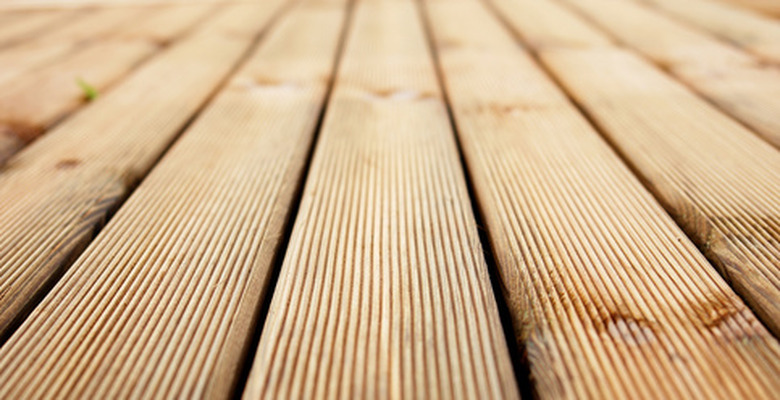How To Use Linseed Oil To Finish A Deck
Things Needed
-
Broom
-
Power washer
-
Boiled linseed oil
-
Lint-free cloth towels or rags
-
Paint tray
-
Rubber gloves
Tip
Linseed oil does not have a resistance to ultraviolet light, which can be destructive to wood over time. Linseed oil can support the growth of mildew. Exercise caution when using it in areas where moisture can be an issue. Start at the farthest, least accessible corner of your deck. Linseed oil takes a while to dry, and you don't want to have to walk across it. You can rent power washers to save the expense of purchasing one.
Warning
Linseed-soaked rags are highly flammable. Heat is generated through oxidation and they can get hot enough to catch fire. Lay them out to dry, soak them in water before disposal or wash them thoroughly. Do not use linseed oil on western red cedar or redwood. Mold will grow very quickly, creating a black surface and damage to your wood.
Linseed oil is a finish that, when applied to wood deck surfaces, causes the grain to show prominently and leaves a wet look on the deck. Linseed oil soaks into the grain, creating a moisture-resistant barrier that will not crack over time like paint will, thus preventing moisture from getting underneath the product and causing decay of the wood. While pure linseed oil is not desirable for wood protection, boiled linseed oil, properly applied, will provide a nice finish and weather protection for your deck.
Step 1
Sweep the surface of your deck with a broom. This is a crucial step in obtaining a nice finish. If your deck is newly installed, inspect the wood for any stains. You can remove a few small stains with hot, soapy water and a brush.
Step 2
Clean the deck thoroughly with a power washer if you are refinishing an existing deck. This will remove dirt and mold stains from the grain of the wood.
Step 3
Pour some linseed oil into your paint tray.
Step 4
Dip your lint-free towel into the linseed oil. Wearing your rubber gloves, soak the towel in the oil so that the oil absorbs into the towel, but is not dripping. Wring out the towel if needed.
Step 5
Wipe the surface of your deck with the towel, following the direction of the grain. Create a uniform coating of oil on the wood. You should not have to rub hard to cover dry spots. If you do, apply more oil to your towel. Spread the linseed oil evenly, leaving a wet surface, but not so wet as to leave any puddles behind.
Step 6
Buff the finish with a dry towel about a half hour after applying the finish. This will smooth out the finish and remove any puddles left behind. Allow 24 hours for the oil to soak in and dry.
Step 7
Apply a second coat of linseed oil. The second coat can go on a little lighter than the first coat, and will ensure good coverage and adequate penetration into the wood for weather protection.
Step 8
Wipe the deck with a dry towel after the second coat, cleaning up any puddles.
